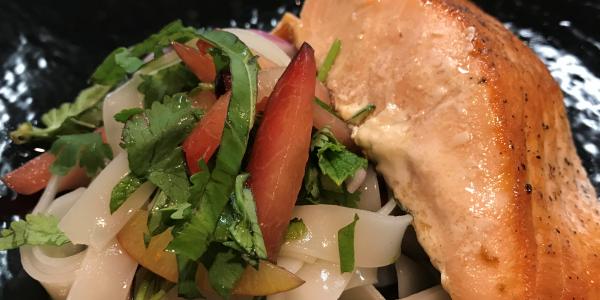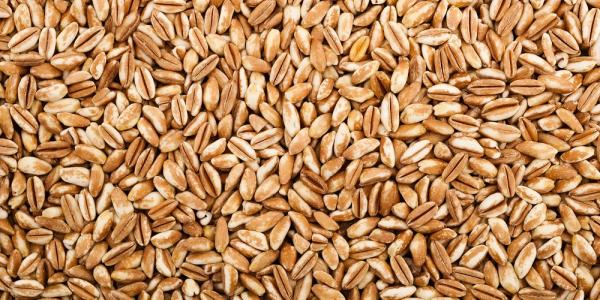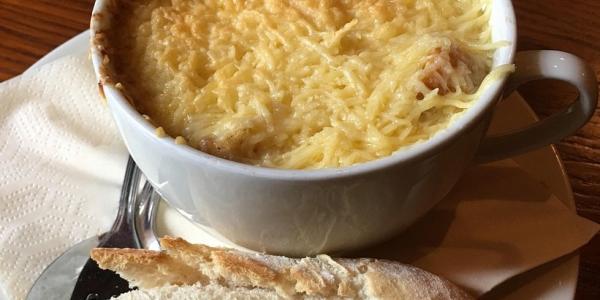Thai Plum Noodle Salad

Ingredients
- 3 T. unseasoned rice vinegar
- 1 T. fresh squeeze lime juice
- 2 T. fish sauce
- 1 T. honey
- 3 firm red plums, cut into 1/2-inch chunks
- ½ c. thinly sliced red onions
- 1 Fresno chile pepper, thinly sliced, not seeded
- ½ lb. rice noodles
- ½ c. rough chopped cilantro
- ½ c. rough chopped mint
- ½ c. rough chopped Thai basil
Preparation
Mix the rice vinegar, lime juice, fish sauce, and honey together and then add the plums, onions, and pepper. Let marinate for minimum of 30 minutes.
Cook noodles according to package instructions, then shock them (plunge in ice water) to stop the cooking process.
Mix together the fresh herbs.
Toss the noodles with half the herb mixture then with the fruit/vinaigrette. Top with a generous amount of fresh herbs before serving. Pairs well with salmon (pictured), pork, or duck.
Learn More About Plums
Think of a plum and you probably envision a round purple fruit, yellow and juicy sweet on the inside. While that’s true for many varieties, plums are the most diverse of the stone fruits. Skin colors range from blue/purple to black, red, green, and yellow. Most have yellowish flesh while some are red inside. Their flavors range from sour to very sweet.
Plum varieties fit into 2 main types:
- Japanese varieties are yellow or red but never purple. Their oval or round shapes come to a point at the blossom end. All have very juicy, fibrous flesh that is distinctly sour near the pit and peel. All are clingstone (fruit clings to the pit). Japanese plums are best eaten fresh and wonderful for baking into desserts.
- European varieties are yellow, blue/purple, or black and covered with silvery bloom. Inside their oval shape is sweet and firm yellow flesh. Most are freestone (fruit separates easily from the pit). Great for eating fresh, cooking, or grilling. Their high sugar content and thick flesh make them perfect for drying (plum promoters prefer “dried plums” versus “prunes”).
All varieties, both Japanese and European, are grown in the United States. California leads the nation producing nearly 90 percent of US-grown plums each year. Michigan comes in at a distant 5th.
Wondering where your plums are from? The calendar is your best clue. In the supermarket Chilean plums appear from January through May, then they’re California plums from mid-May through October. Michigan plums come into season beginning mid-July and ending late September and are found mostly at farmers markets and farm stands.
Plums are ripe and ready to eat when they are fragrant and give to gentle pressure. Choose plums that look plump and feel firm but not hard. Softening can be speeded up by placing plums in a tightly closed paper bag on the countertop for a few days. When ripe, eat at once! They’ll also keep in the fridge for 3 days.
Peggy Crum MA, RDFeatured Recipes

Rhubarb & Strawberry Crisp
Combine tart rhubarb with sweet strawberries, add a streusel topping, and bake until bubbly. Dessert doesn’t get easier—or more classic—than this. Serve warm with a scoop of vanilla ice cream. You’re sure to get rave reviews!

Farro Salad with Grilled Vegetables
Chewy farro grains are delicious in this autumn-y salad. Recipe yields enough for dinner for 2 to 4 with some left for a couple of lunches. To do this, make the base with dressing, farro, and grilled veggies. Add fresh veggies to the base as you go.

Pecan and Dark Chocolate Chip Cookies
Roasting amps up the flavor in everything including pecans. Chef Kurt's attention to detail takes a traditional chocolate chip cookie to another level of yum!

Onion Soup
Onions, the simplest of pantry staples, mingle with butter, broth, and herbs to become luxuriously smooth and delicious. Add "homemade" croutons and a blend of cheeses to make a complete and satisfying meal.





